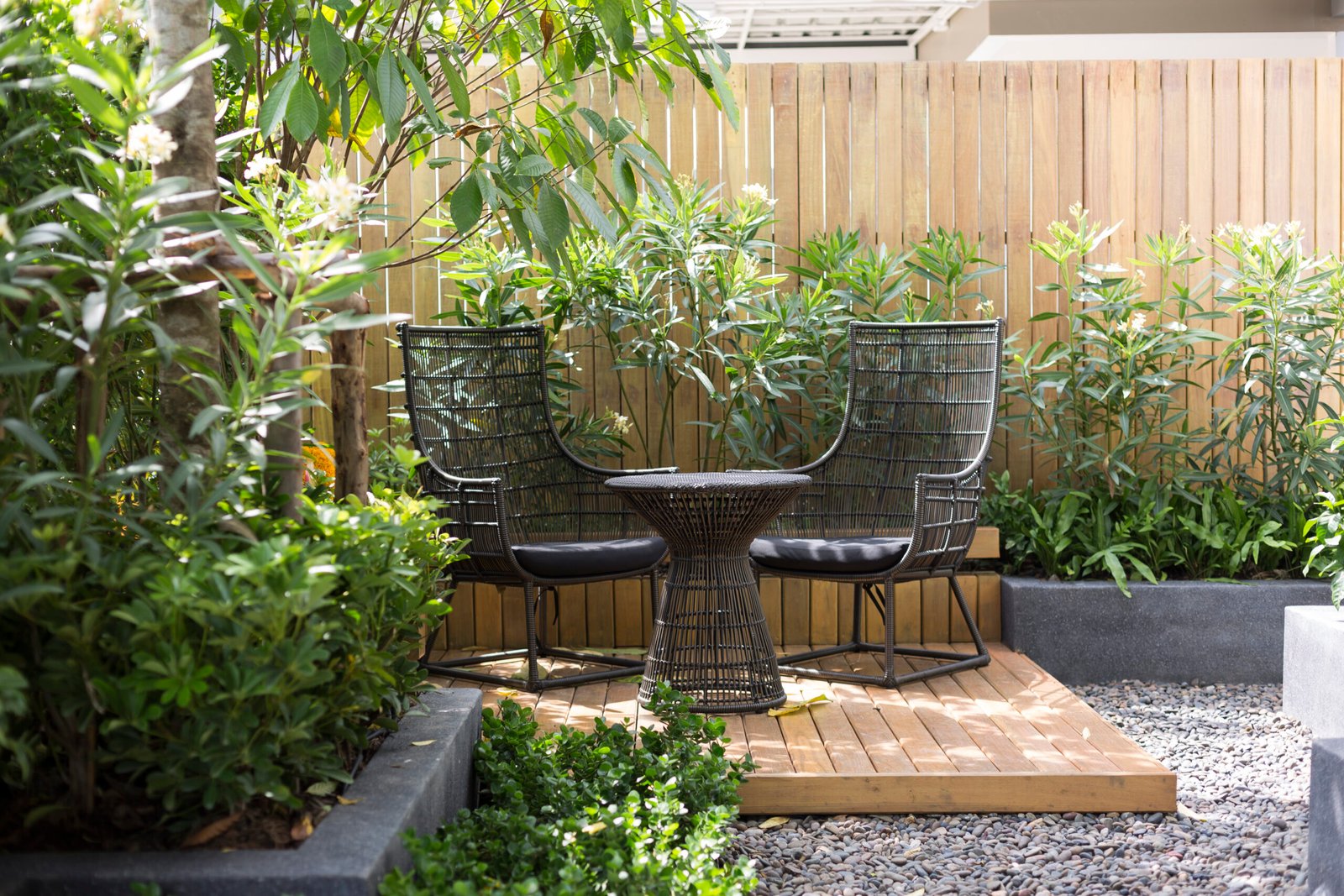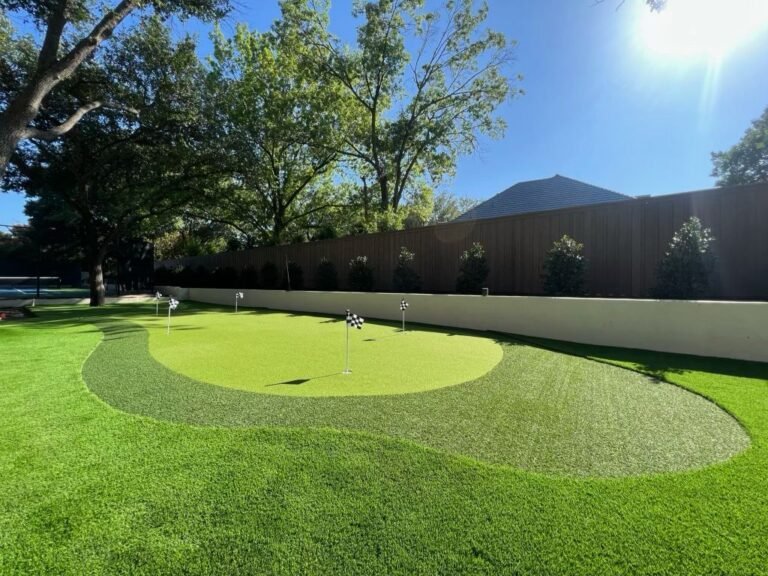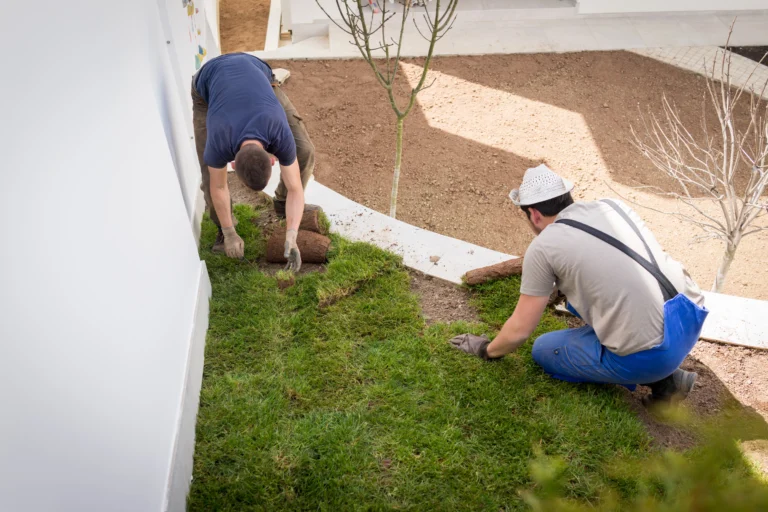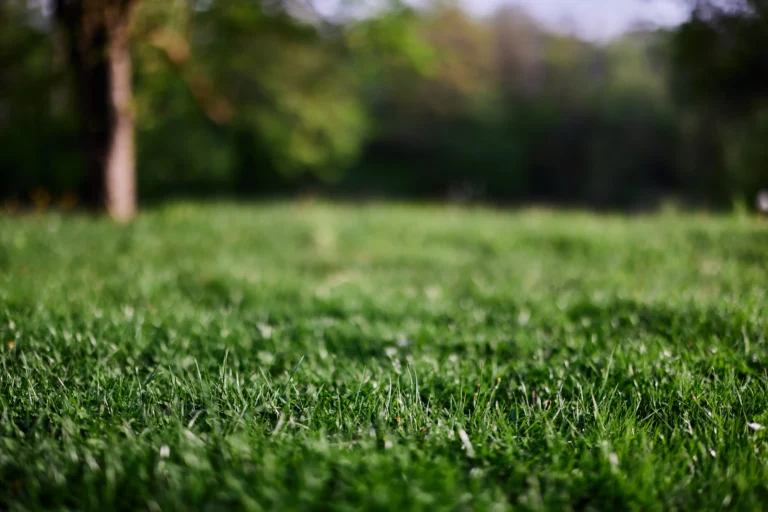Cheap Simple Front Yard Landscaping Ideas: Transform Your Space on a Budget

Front yard landscaping is a pivotal aspect of a home’s curb appeal, offering a first impression that sets the mood before one even steps inside. Homeowners often seek budget-friendly solutions to enhance the aesthetic appeal of their outdoor space. With a few simple and inexpensive strategies, a front yard can be transformed from a bland lawn into a charming and inviting entrance.
For those looking to maximize the visual impact of their yard without a hefty investment, there are numerous landscaping ideas that blend cost-effectiveness with style. Incorporating native plants, for example, reduces both maintenance and water costs, while utilizing mulch can create clean garden lines and curb weeds affordably. Strategic planning and the use of perennial flowers ensure that the garden looks vibrant year after year with minimal replacements.
Additionally, DIY projects like homemade garden paths and repurposed decorative elements can add personal character to the front yard. The use of stone, gravel, or even reclaimed bricks to create pathways allows homeowners to save money while crafting an intriguing, natural look. Lighting, an often-overlooked element, can also be approached creatively without great expense, enhancing the ambiance of the yard after sunset with solar-powered lights or cleverly-placed lanterns. Through such inexpensive yet effective alterations, front yard landscaping can profoundly impact a property’s character and value.
Design Principles for Front Yard Landscaping
Successful front yard landscaping hinges on adhering to design principles that enhance visual appeal and harmony. These guidelines ensure a yard’s aesthetics align with functionality, creating a welcoming entrance to the home.
Emphasizing Curb Appeal
One’s front yard is often the first impression people have of a home. Curb appeal can be maximized by incorporating elements that complement the architecture of your home. For example, using plants that echo the colors and textures of the house’s exterior can create a cohesive look. Curves can soften the visual impact of a straight-lined architectural structure and invite visitors along a meandering path to the front door.
Creating Balance with Symmetry
Balance is essential in front yard landscaping. It can be achieved through symmetry, which instills a sense of order and calm. Planting identical shrubs or trees on either side of the walkway or door creates visual anchors that appeal to the eye. When designing with symmetry, one should consider the size and shape of plants so that they grow in proportion to the house and each other.
By applying these design principles, individuals can develop a front yard landscape that beautifies their property while reflecting the inherent style and structure of their home.
Selecting the Right Plants
Careful selection of plants ensures a front yard’s beauty and reduces maintenance. Thoughtful choices cater to longevity and the environment, while ensuring a captivating landscape.
Going for Perennials Over Annuals
Perennials are cost-effective and enrich the yard year after year, as opposed to annuals, which need to be replanted annually. A well-selected assortment of perennials provides varying bloom times, keeping the yard vibrant through seasons. For instance:
- Spring: Peonies and irises
- Summer: Black-eyed Susans and coneflowers
- Fall: Sedum and chrysanthemums
Incorporating Native Plants
Native plants thrive in their local environments and typically require less water and care. They support local wildlife and biodiversity. Here are examples of resilient native additions:
- Flowering Shrubs: Azaleas provide long-lasting flowers and serve as local pollinators’ favorites.
- Evergreen Shrubs: Boxwood and holly provide year-round foliage and structure.
Choosing Low Maintenance Shrubs and Trees
Select shrubs and trees that demand minimal upkeep:
- Shrubs: Dwarf varieties of junipers and holly bushes are drought-tolerant and need little pruning.
- Trees: Maple and oak trees are robust, require little attention and add grandeur to the landscape.
Strategic implementation of these plant types can significantly enhance the appearance and functionality of a front yard with minimal ongoing effort.
Incorporating Hardscaping Elements
Hardscaping elements can significantly enhance a front yard’s aesthetic and functionality. The use of pavers, retaining walls, and carefully chosen focal points contributes to a cohesive and attractive landscape design.
Using Pavers and Stepping Stones
Pavers and stepping stones are both cost-effective and versatile. Pavers can create a sturdy path through the yard or define an area for seating. Stepping stones, on the other hand, offer an informal route that can blend seamlessly with the surrounding grass or ground cover.
- Materials: Concrete, natural stone, brick
- Shapes: Square, round, irregular
- Patterns: Herringbone, basketweave, staggered
Building Retaining Walls and Edgings
Retaining walls not only manage slope but also add structure to garden beds. Constructing a wall with interlocking blocks or timbers can prevent soil erosion and provide a backdrop for plants. Edgings, acting as a border, keep turf grass and garden areas separate, reducing maintenance and improving neatness.
- Materials: Concrete blocks, natural stone, wood
- Height Considerations: Below 4 feet for stability without professional engineering
Adding a Focal Point with a Water Feature or Bench
A water feature or bench serves as a stunning central element. A simple fountain or birdbath can introduce the soothing sound of water, attracting wildlife and creating a tranquil spot. Benches offer a place to sit and appreciate the outdoor space, and they can be constructed from materials that match or complement the hardscaping.
- Water Feature Options: Pre-cast fountains, DIY basins
- Bench Materials: Wood, metal, stone
Landscaping on a Budget
Budget-conscious homeowners can still achieve a beautiful front yard by making smart, low-cost choices in materials and methods. From selecting inexpensive mulch for garden beds to repurposing everyday items as creative planters, landscaping on a budget does not mean sacrificing quality or aesthetics.
Utilizing Mulch for Garden Beds
Mulch is a cost-effective way to enhance garden beds while suppressing weeds and retaining soil moisture. Homeowners can consider the following types of mulch to use:
- Organic Mulch:
- Straw or hay
- Shredded leaves
- Wood chips or bark
- Inorganic Mulch:
- Pebbles or gravel
- Black plastic
- Landscape fabric
Buying mulch in bulk can also lead to considerable savings.
Repurposing Items as Planters
Homeowners can convert old containers into planters for an economical and unique approach to front yard landscaping. Items that serve well as flower pots and planters include:
- Old tires
- Wooden crates or pallets
- Broken wheelbarrows
- Unused kitchen items (pots, teapots, bowls)
Painting or decorating these items can further enhance their appearance and integrate them into the overall landscaping theme.
Opting for DIY Solutions
DIY solutions for front yard enhancements are both budget-friendly and personalizable. Homeowners can tackle basic projects to save money:
- Garden Path: Creating a path with stepping stones or repurposed pavers.
- Fences and Borders: Building small fences or edging with spare wood or stones.
- Seed Starting: Growing plants from seeds rather than buying mature plants.
Executing these simple projects requires minimal materials while fostering a sense of accomplishment and individuality in the yard’s design.
Maximizing Visual Interest
Maximizing the visual appeal of a front yard doesn’t have to be expensive. Key elements like color coordination, texture, and strategic lighting can make a significant impact.
Creating Colorful Flower Beds
One can enhance their landscape with vibrant flower beds that provide a continuous bloom cycle. They should choose a variety of annual and perennial flowers that bloom at different times to maintain color throughout the seasons. A sample layout could be:
- Spring: Pansies, tulips, daffodils
- Summer: Petunias, daylilies, marigolds
- Fall: Chrysanthemums, asters, sedum
Incorporating mulch not only retains moisture for the flowers but also creates a clean, unified look.
Layering with Ornamental Grasses
Layering different heights and textures adds depth and richness to the yard. Ornamental grasses can serve as a backdrop for flower beds or as standalone features. They are low-maintenance and offer year-round interest. Some popular ornamental grasses include:
- Short Grasses: Blue fescue, dwarf fountain grass
- Tall Grasses: Maiden grass, pampas grass
Grasses should be planted in groups or swathes for maximum impact and movement.
Leveraging Landscape Lighting
A well-lit landscape enhances safety and extends the enjoyment of the front yard into the evening. Solar-powered LED lights are an economical and easy-to-install option. The lighting can be used to:
- Highlight Pathways: Ensuring clear visibility and safe navigation
- Accentuate Key Features: Focusing on specimen plants or garden sculptures
They should plan lighting in layers—ambient, task, and accent—to create a dynamic and inviting outdoor space.
Practical Landscape Additions
Incorporating vegetable gardens and installing functional walkways or driveways can significantly enhance the usability and aesthetics of a front yard.
Integrating Vegetable Gardens
Vegetable gardens serve a dual purpose; they are not only visually pleasing but also provide fresh produce. To start, one can create raised beds with simple frames constructed from untreated lumber. These beds should be positioned in an area that receives ample sunlight. For an orderly appearance, use mulch between the beds to suppress weeds and provide clear walking paths.
- Layout Tips for Vegetable Gardens:
- Align beds in a grid pattern to maximize space.
- Include a variety of plants with differing heights and colors for visual interest.
- Use companion planting to encourage a healthy garden ecosystem.
Adding Functional Walkways and Driveways
A front yard must be accessible, and adding walkways or expanding driveways can improve both functionality and kerb appeal. Efficient driveways optimize space usage while allowing for easy vehicle movement and parking. Materials like gravel or pavers for the driveway are cost-effective options that also offer good drainage. For walkways, concrete stepping stones or brick can create a charming path to the front door.
- Driveway and Walkway Essentials:
- Ensure driveways are at least 10 feet wide for comfortable vehicle access.
- Add a curving walkway to soften the landscape and invite visitors along a scenic path.
- Incorporate low-growing ground covers between walkway pavers for a lush look.
Maintaining Your Landscape
Maintaining a front yard landscape efficiently keeps it looking its best and minimizes long-term efforts. A well-kept yard with low-maintenance designs saves time and avoids extensive work down the line.
Implementing Weed Control
One needs to prioritize weed control to prevent unwanted growth from undermining their landscaping efforts. Here are a few specific strategies:
- Mulching: A 2- to 3-inch layer of mulch in garden beds suppresses weeds and maintains soil moisture.
- Ground Cover Plants: They naturally inhibit weed growth by covering bare spots where weeds typically sprout.
- Regular Inspection: A routine check for weeds and removal when they are small prevents them from spreading.
Seasonal Pruning and Care
Proper pruning and seasonal care are essential for a healthy landscape:
- Spring Pruning: Prune flowering plants after blooming to encourage growth and maintain shape.
- Fall Care: Remove dead annuals, and prepare perennials for winter while considering plant-specific needs.
By focusing on these aspects, one can ensure a cleaner, more sustainable outdoor space that requires less intervention over time.
Enhancing Details
Simple and affordable additions can significantly boost curb appeal. Focusing on details helps create a more inviting and coherent front yard.
Decorating with Window Boxes and Solar Lights
Window boxes add a charming touch and a pop of color when filled with flowers or ornamental plants. They enhance windows visually and can unify the house’s facade.
- Material Options for Window Boxes:
- Wood (traditional, rustic)
- Metal (contemporary, sleek)
- Resin (durable, versatile)
Solar lights can be both functional and decorative. They save energy and illuminate pathways or highlight landscaping features at night.
- Places to Install Solar Lights:
- Along walkways
- Near the driveway
- Around garden beds
Accessorizing with a Mailbox or Archway
A mailbox is not just a necessity but also a front yard feature, and customizing a mailbox can express personal style while increasing functionality.
- Mailbox Design Suggestions:
- Vintage (adds character)
- Modern (clean, minimalistic)
- Decorative post (incorporates craftsmanship)
An archway can serve as an intriguing entrance to a yard or garden. Planting climbing plants like arborvitae can provide lush greenery and a sense of privacy.
- Benefits of Arborvitae for Archways:
- Evergreen foliage
- Low maintenance
- Natural privacy screen
Water-Efficient Landscaping
Water-efficient landscaping is a strategic approach to designing outdoor spaces that reduces the need for supplemental water from irrigation. This method not only saves water but also results in lower maintenance and utility costs.
Adopting Xeriscaping Principles
Xeriscaping is a landscaping philosophy that utilizes water-efficient techniques to create a visually appealing garden with minimal water use. The principles of xeriscaping include:
- Planning and Design: Start with a detailed design that zones plants according to their water needs and optimizes natural rainfall.
- Soil Improvement: Amend soil with compost to increase its water retention and support plant growth.
- Efficient Irrigation: Employ drip irrigation or soaker hoses to deliver water directly to plant roots, minimizing waste.
- Mulching: Apply a layer of mulch around plants to reduce evaporation, suppress weeds, and maintain soil temperature.
Choosing Drought-Tolerant Plants
Selecting the right plants is crucial for water-efficient landscaping. Drought-tolerant plants require less water and are well-adapted to dry conditions. Examples include:
- Agave: These succulents are known for their rosette of tough, evergreen leaves and thrive in hot and dry climates.
- Bougainvillea: A vibrant, flowering plant that withstands drought well and can add a pop of color to any landscape.
Plant List:
- Agave: Low water; full sun
- Bougainvillea: Low to moderate water; full sun
When choosing plants, it’s essential to consider their water needs and suitability for the specific climate and soil conditions of the garden.
Getting Started
Before diving into the landscaping work, one needs to plan carefully and set the stage for a yard that makes a strong first impression. Remember, simplicity is key to achieving a beautiful and cost-effective front yard.
Planning and Preparation
The initial step involves assessing the current state of the yard and determining what changes are needed. Homeowners should measure their front yard space and note any existing features that can be enhanced. Budget should be clearly defined to avoid overspending. Here is an example of what this planning might look like:
| Task | Considerations |
|---|---|
| Measure yard area | Account for pathways, borders, and large trees |
| Identify existing features | Decide what stays, what goes, or what changes |
| Set a budget | Keep it realistic for cost-effective changes |
Creating a sketch or blueprint of the yard can help visualize the intended outcome. It’s important to choose low-maintenance plants suited to the local climate and soil type to ensure lasting appeal with minimal effort.
Making the First Impression Count
The front yard serves as a preview to the rest of one’s home. Therefore, they should ensure the entrance and pathways are inviting and well-defined. A clear path flanked by flowering plants or shrubs can dramatically enhance curb appeal and set the tone for visitors. Consider using these specific elements:
- Entrance: A colorful welcome mat or a unique door wreath
- Pathways: Stepping stones or a simple gravel path
- Greenery: Native plants or perennial flowers for year-round interest
Using symmetrical or balanced arrangements on either side of the walkway can create a harmonious look that is visually pleasing. Incorporating different textures through mulch, stones, or various plant foliage can add depth to the landscape without overwhelming the space.






